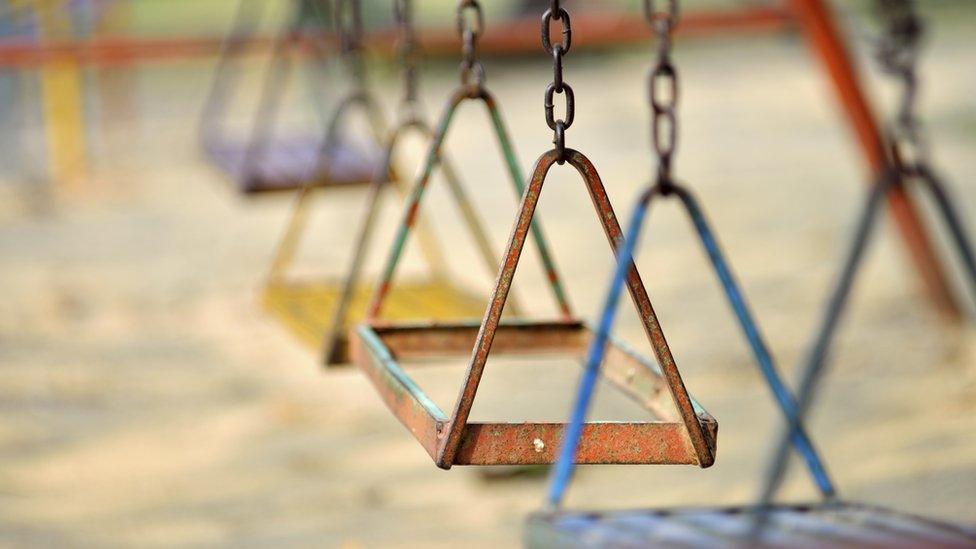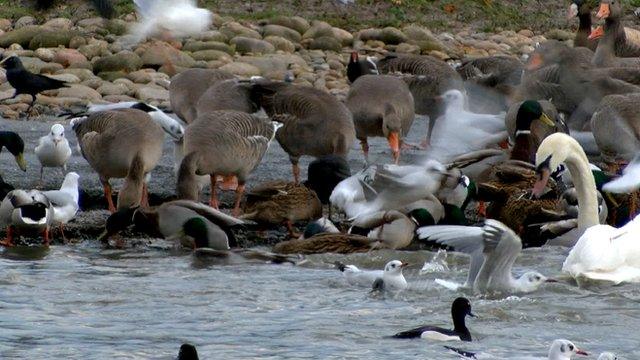Second-hand toys could harm children, scientists discover
- Published

Plastic used in some second-hand toys could pose a health risk for children as they don't meet the most up-to-date safety guidelines, a study has found.
Scientists tested 200 used plastic toys they found in nurseries, thrift shops and homes across England's south-west for nine hazardous elements.
Twenty toys had traces of all nine elements, with some concentrations high enough to fail European standards.
But experts said it would be difficult to quantify the risk.
"Lego bricks from the 70s and 80s are the big fail," said Dr Andrew Turner, of the University of Plymouth, who conducted the study., external "Toys in those days weren't tested and now we're using them and handing them down."
Chronically toxic
For the study, published in Environmental Science and Technology, Dr Turner and his team used X-ray fluorescence technology to analyse a host of toys - from cars and trains to figures and puzzles.
All the toys were of the size that could be chewed by young children.
They discovered high concentrations of hazardous elements including antimony, barium, bromine, cadmium, chromium, lead and selenium.
These chemicals can be chronically toxic if children are exposed to them at a low level over an extended period of time.
If the children put the toys in their mouths, they would be exposed to greater levels of these chemicals.
Dr Turner conducted a separate analysis on 26 of these toys to see if they comply with limits set by the European Council's Toy Safety Directive., external Ten failed this test because they were secreting too much bromine, cadmium or lead.
Red, yellow or black plastics were the worst offenders.
Dr Turner said: "Second-hand toys are an attractive option to families because they can be inherited directly from friends or relatives or obtained cheaply and readily from charity stores, flea markets and the internet."
But he said new regulations do not cover the recycling or resale of older toys.
Dr Turner said: "Consumers should be made more aware of the potential risks associated with small, mouthable and brightly coloured old plastic toys or components.
"Without that, the attractive cost, convenience and recyclability of previously used toys has the potential to create a legacy of chemical contamination for younger children."
Prof Andrew Watterson, of the University of Stirling, who was not involved in the research, said: "Cadmium is a carcinogen and any uptake should be avoided if possible because of chronic effects.
"So these second-hand toys, especially of particular colours may present a risk, but it will be difficult to quantify it."
He said a "precautionary approach to their sale would therefore be wise" especially since "the exposed socio-economic population may also be more likely to come into more contact with other environmental sources of these substances like lead and cadmium than children who get 'new' toys."
'Weigh up the risks'
Mark Gardiner, of the Chartered Trading Standards Institute, said: "Any goods that are bought second-hand are not going to have the same safety assurances.
"Parents should weigh up these risks, especially when giving their children toys that are very old and could have also mechanically deteriorated over time."
Mr Gardiner said that "if the toys do indeed pose a risk to children" then "the products can be removed from the market".
He added: "If parents are concerned then the advice would be to take them away."
Dr Turner has previously made similar findings in second-hand drinking glasses, external and the paint used on playground equipment.
- Published25 January 2016

- Published26 November 2015
